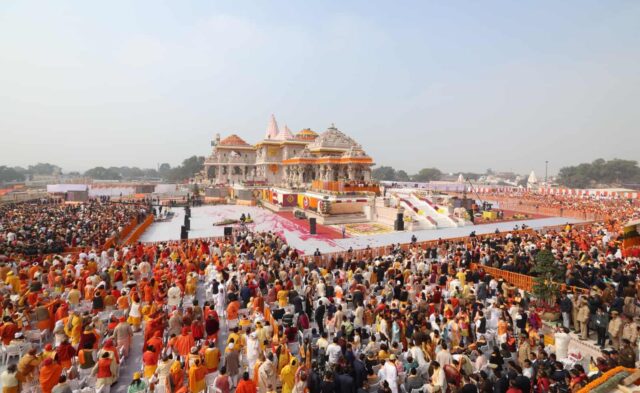One of the biggest temples to be built in India after Independence, the Ayodhya Ram Temple is touted to be a combination of new-age technological conveniences and age-old Indian traditions.
Between 1528 and 1529, the Babri Masjid was built by the Mughal emperor Babur. However, members of the Hindu community also sought possession of the site, claiming it to be the birthplace of Lord Ram. The site subsequently became a disputed site and a long, legal battle ensued. Ending the title dispute on November 9, 2019, the Supreme Court accepted the 2.77 acres of disputed location as the birthplace of Lord Ram, paving the way for the construction of the Ram Mandir.
Ayodhya Temple area and capacity
Spanning 54,700 sq ft, the temple area covers nearly 2.7 acres of land. The entire Ram Mandir Complex would be spread over nearly 70 acres and will be equipped to host about a million devotees at any time.
Ayodhya Ram Mandir: Interior
Specifications
The upcoming temple is 380-foot long, 235-foot wide and 161-foot high. In height, the temple will be three times the height of the existing structure in the old city.
Style
The temple is designed by chief architect, Chandrakant Bhai Sompura, whose grandfather, Prabhakarji Sompura, had designed the Somnath Temple, along with his son, Ashish Sompura. The 79-year-old architect was appointed in 1992. Sompura mentioned that the Ram Mandir is being built in the Nagara style, following the principles of Vastu Shastra. The entrance on the east would be built in the Gopuram style, which represents the temples of the south. The walls of the temple would display artworks depicting the life of Lord Ram.
Shape
The sanctorum of the mandir would be octagonal-shaped while the structure perimeter would be circular.
Floors
The mandir will have five domes and one tower with a height of 161 ft. The 3-floor temple will have a centre – Garbh Griha – built to allow sun rays to fall on the idol of Ram Lalla, the infant embodiment of the Lord. Like the sanctorum, the Griha Mandap would be fully covered, while the Keertan Mandap, the Nritya Mandap, the Rang Mandap and the two Prarthana Mandaps on each side would be open areas.
Number of pilgrims to Ayodhya Ram Mandir
Over 50,000 people visit the temple every day. This number is expected to increase to 100,000 once the temple is inaugurated.
The significance of the Ram Mandir not only lies in its majestic architecture but also in its spiritual essence, which presents it as a symbol of unity, faith, and cultural heritage. The construction of the temple represents a cultural bond that binds the diverse people of India. The temple complex is not only going to be a place of worship but also a cultural centre that would foster the teachings of Lord Rama and promote the values of righteousness, truth, and compassion for generations to come.










